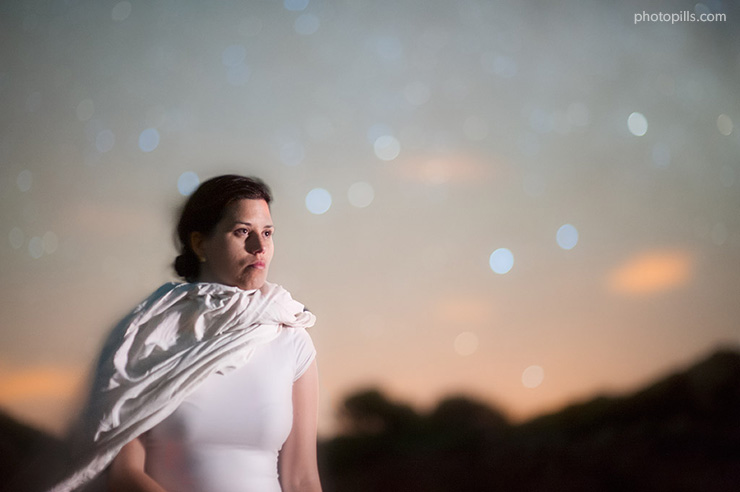How to use the Advanced Depth Of Field Calculator
Most depth of field calculators you find online give DoF values based on an accepted Circle of Confusion (CoC). This CoC results from the combination of the selected camera sensor and the following viewing hypothesis:
- pupil magnification. This is the result of dividing the diameter of the exit pupil of a lens by its entrance pupil diameter. For focal lengths around 50mm, not taking into account pupil magnification may work pretty well.
But, when using long focal lengths, such as 105mm or 180mm, you should take into account pupil magnification to get more accurate results.

This macro depth of field calculator takes into account magnification and pupil magnification to give you a good approximation of depth of field values in macro photography. Just introduce camera model, aperture, focal length, focus distance, pupil magnification and extension tube (in the case you use one) to calculate:
- Magnification: The proportion between the size of the subject image on the camera sensor and its real size.
- Effective aperture: Magnification has the “effect” of closing the aperture. At 1:1 magnification, you lose about 2-stops of light. This means that an aperture of f/2.8 becomes more like f/5.6.
- This calculator computes effective aperture as: lens aperture × (1+ Magnification). This works pretty well for focal lengths around 50mm.
- For longer focal lengths (macro lenses), you need to take into account lens Pupil Magnification. Then, effective aperture is: (1+ Magnification/Pupil Magnification).
- Total depth of field: The distance between the farthest and nearest points which are in acceptable focus.
- Smallest Subject which can fill the image: the size of the smallest subject that can fit in the image.
- Safe step size for stacking (20% image overlapping): It's the maximum step you need to move the camera on a focus slider in order to capture the whole subject in focus when applying the focus staking technic. It is calculated as Total depth of field × 0.8.
Regarding the aperture, on the calculator, set "YES" to "Aperture is already an effective f-stop" if you're using a Nikon camera. These cameras automatically correct for the effective f-stop and show it on the LCD display.
Note: given the sensor size, the circle of confusion is calculated assuming a print size of 8''×10'' (20cm×25cm), a viewing distance of 10" (25cm) and the manufacturers standard visual acuity.
Understanding depth of field
If you’re interested in learning more about macro depth of field, circle of confusion, hyperfocal distance, and classic depth of field, where to focus exactly and what camera settings to use to get a desired level of sharpness, make sure to take a look at the following article, it explains everything you need and more:
Depth of Field: The Definitive Guide
With this article you’ll learn both, how to shoot deep depth of field to get everything in focus in the image...

... and how to shoot shallow depth of field, so you get the creative control over what is sharp in your photos to tell the story you want.

Finally, If you're interested in improving your photography, check our detailed photography guides on:
- Milky Way Photography
- Moon Photography
- Astronomical Events Photography
- Star Trails Photography
- Meteor Showers Photography
- Lens Filters and Long Exposure Photography
- Drone Photography
- Solar Eclipses Photography
- Lunar Eclipses Photography
- Full Moon Silhouettes Videos
- How to find sunrises and sunsets.
- How to find moonrises and moonsets.
And also check these fundamental photography guides:
How to embed the Macro DoF Calculator on your website
Take the power of PhotoPills’ Macro Depth of Field (DOF) Calculator with you. Just copy the following lines and paste them within the code of your website, right in the place where you want to embed it:
<div id="ppdofmacro"></div>
<script src="//photopills.com/widgets/ppdofmacro.min.js" async></script>The code will run asynchronously, without penalizing the loading time of your website.